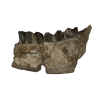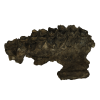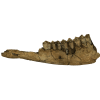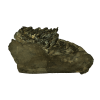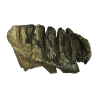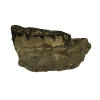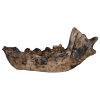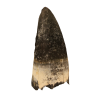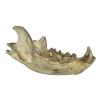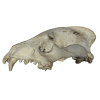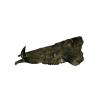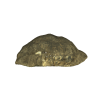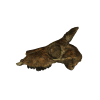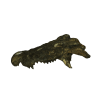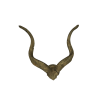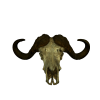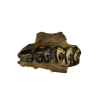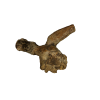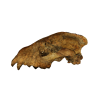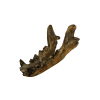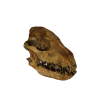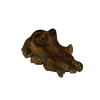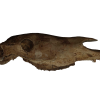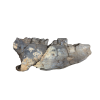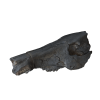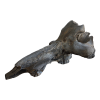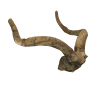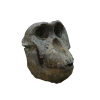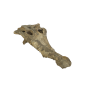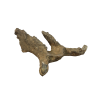This relatively complete mandible (lower jaw) belongs to the rhinoceros Ceratotherium simum and was recovered from fossil exposures to the east of Lake Turkana in 1970. It is indistinguishable from the modern day white rhinoceros that feeds mostly on grass. Rhinos are rare elements in the Plio-Pleistocene faunas of the Turkana Basin, where Ceratotherium mauritanicum (previously C. praecox), occurs in the early strata. Close to the Plio-Pleistocene boundary (2.6 million years ago) Ceratotherium maurtanicum is replaced by another species, Ceratotherium simum, a species that became an increasingly efficient grazer. Ceratotherium simum is the more common rhino in the late Pliocene and early Pleistocene faunas of East Africa. Ancestors of both the extant east African White Rhino, Ceratotherium simum, and the Black Rhino, Diceros bicornis, can trace their ancestry back to the early Pliocene Ceratotherium neumayri, one of the few rhinos to survive the late Miocene extinctions around 15 million years ago.
|
Ceratotherium simum
KNMER 472 Age approx. 1.90 Million Years
Digital Capture: Photogrammetry Rhinocerotidae 0 Comments Order: Perissodactyla Family: Rhinocerotidae Genus: Ceratotherium Species: simum Element: Mandible Locality: East Turkana Year of Discovery: 1970 Other Fossils to View |






